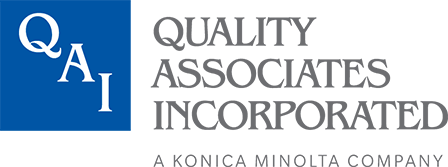Managing your organization’s content successfully is crucial for maintaining efficiency, compliance, and competitive edge. Whether dealing with paper documents, digital files, or a mix of both, choosing the right content management solution can significantly impact your operations. But with so many available options, how do you determine which solution best suits your needs? Let’s explore the key factors when selecting a content management solution.
Understanding Content Management
Before diving into the selection process, it’s essential to understand what we mean by content management. Content management encompasses the systems and methods used to capture, store, organize, and distribute an organization’s information assets. These assets can include documents, images, videos, and other digital files.
Enterprise content management (ECM) takes this further, providing a comprehensive approach to managing an organization’s content throughout its lifecycle. An effective enterprise content management strategy helps streamline operations, ensures regulatory compliance, and improves decision-making capabilities.
Assessing Your Needs
The first step in choosing the right content management solution is assessing your organization’s needs. Consider the following questions:
- What types of content do you need to manage? (e.g., paper documents, digital files, forms, multimedia)
- What are your current pain points in managing content?
- What industry-specific regulations must you comply with?
- What are your goals for implementing a content management system? (e.g., increased efficiency, better collaboration, improved compliance)
By clearly defining your needs and objectives, you can narrow down the options and focus on solutions that align with your requirements.
Key Features to Consider FOR Content Management
When evaluating content management solutions, look for these essential features:
- Document Scanning and Capture: If you’re dealing with paper documents, ensure the solution offers robust scanning capabilities, including image enhancement and quality control processes and the ability to create images consistent with the new federal standards for permanent records.
- Indexing and Search: Look for advanced indexing and file naming features that simplify organizing and retrieving documents.
- Workflow Automation: Choose a solution that allows you to automate routine tasks and create efficient workflows for document processing and approval.
- Integration Capabilities: Ensure the system can integrate with your existing software and hardware, including multi-function devices and cloud systems.
- Security and Access Control: Look for robust security features to protect sensitive information and control user access.
- Scalability: Choose a solution that can grow with your organization and adapt to changing needs.
- Cloud Capabilities: Consider solutions that offer cloud storage and access, enabling remote work and improved collaboration.
Industry-Specific Considerations
Different industries have unique content management needs. For example:
- Government Agencies: Look for solutions that comply with M-19-21/M-23-07 records modernization requirements, offer secure conversion of documents to electronic formats, and can deliver images consistent with the new federal digitization standards.
- Healthcare: Prioritize solutions with solid security features to protect patient data and ensure HIPAA compliance.
- Financial Services: Focus on systems with advanced data extraction and classification capabilities for processing forms and financial documents.
- Legal: Look for solutions with robust eDiscovery features and the ability to handle large volumes of case-related documents.
Evaluating Vendors
Once you’ve identified potential solutions, evaluating the vendors providing them is essential. Relevant experience and expertise are critical; look for vendors with a proven track record in your industry. In addition, ensure the vendor offers comprehensive support and training to help your team adopt the new system. Choose a vendor that can tailor the solution to your specific needs – but with an emphasis on configuration rather than customization. Lastly, underlying content and records technologies change daily; select a vendor that stays current with technological advancements and regularly updates its offerings.
Implementing Your Content Management Solution
Implementing a new content management system is a significant undertaking. An integral starting point is a straightforward strategy aligned with your organization’s critical success factors and is understood and supported by senior management. Consider piloting the solution in one department before rolling it out organization-wide. Ensure all users are adequately trained on the new system to maximize adoption and efficiency. Your task doesn’t end with the initial implementation – continually assess the system’s performance and adjust as needed.
As technology continues to evolve, so do content management solutions. Look for systems that incorporate emerging technologies such as:
- Artificial Intelligence and Machine Learning: These technologies can improve document classification, data extraction, and process automation.
- Robotic Process Automation: RPA can further streamline routine tasks and improve efficiency.
- Advanced Analytics: Look for solutions that provide actionable insights from your content to drive better decision-making.
Choosing the Right Content Management Solution
Choosing the right content management solution is a critical decision that can significantly impact your organization’s efficiency and effectiveness. By carefully assessing your needs, considering industry-specific requirements, and evaluating potential solutions and vendors, you can select a system that meets your current needs and positions you for future success.
Remember, the best content management solution aligns with your organization’s unique needs and goals. Whether implementing a comprehensive enterprise content management system or a more focused document management solution, choose a system that enhances your ability to capture, organize, and utilize your valuable information assets effectively.
Partner with QAI
Many organizations need more internal resources to undertake a records modernization project. QAI’s team of records management specialists has created the industry’s most in-depth Records Modernization Center. It offers comprehensive tools and vital information to help you adopt the proper measures for full compliance, whether you are a senior official, a records officer, or another government or private sector employee.
Records modernization is not just a technical upgrade; it’s a strategic imperative.
[Written and reviewed by a human, with the assistance of Microsoft Copilot and Claude.ai]


